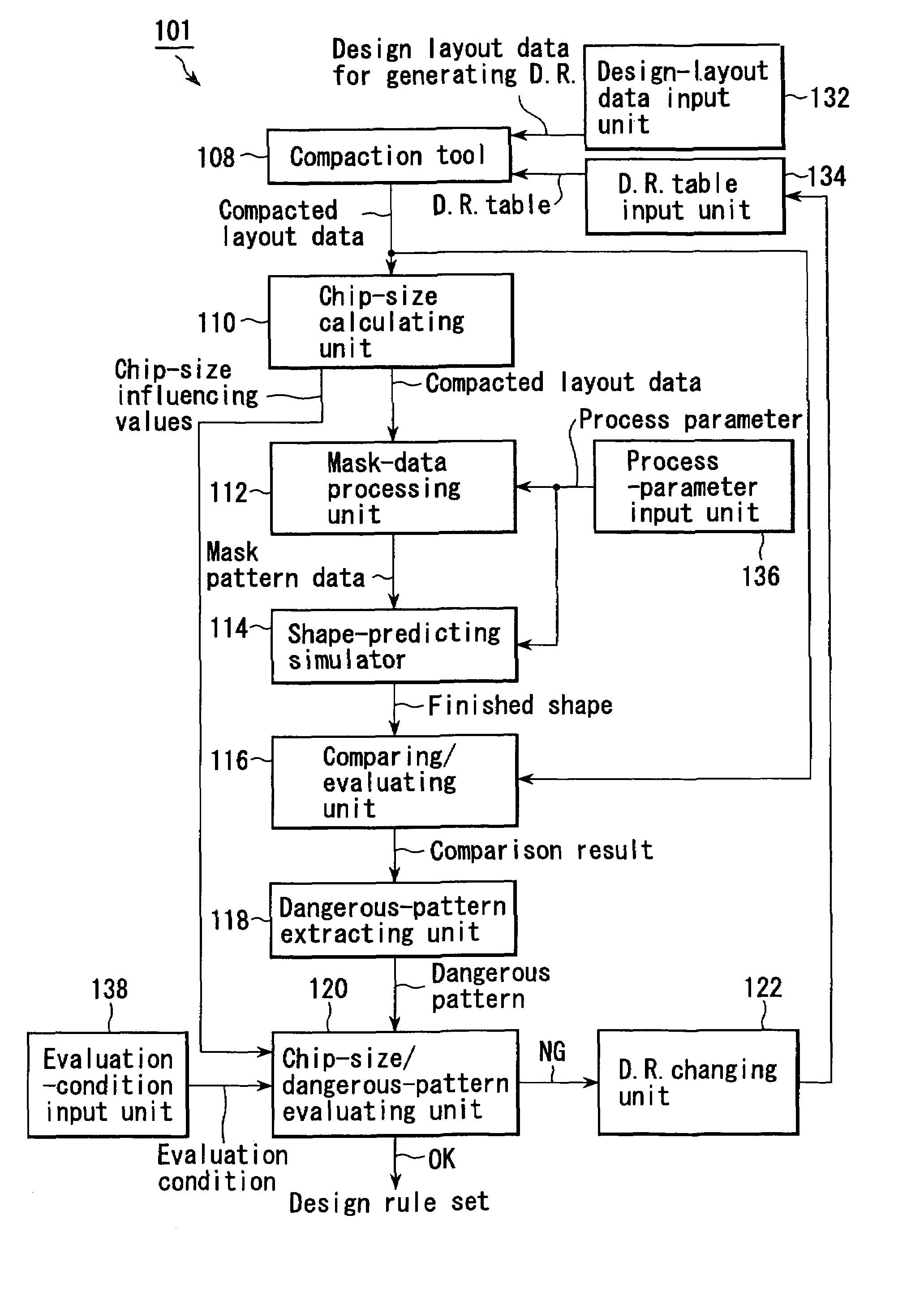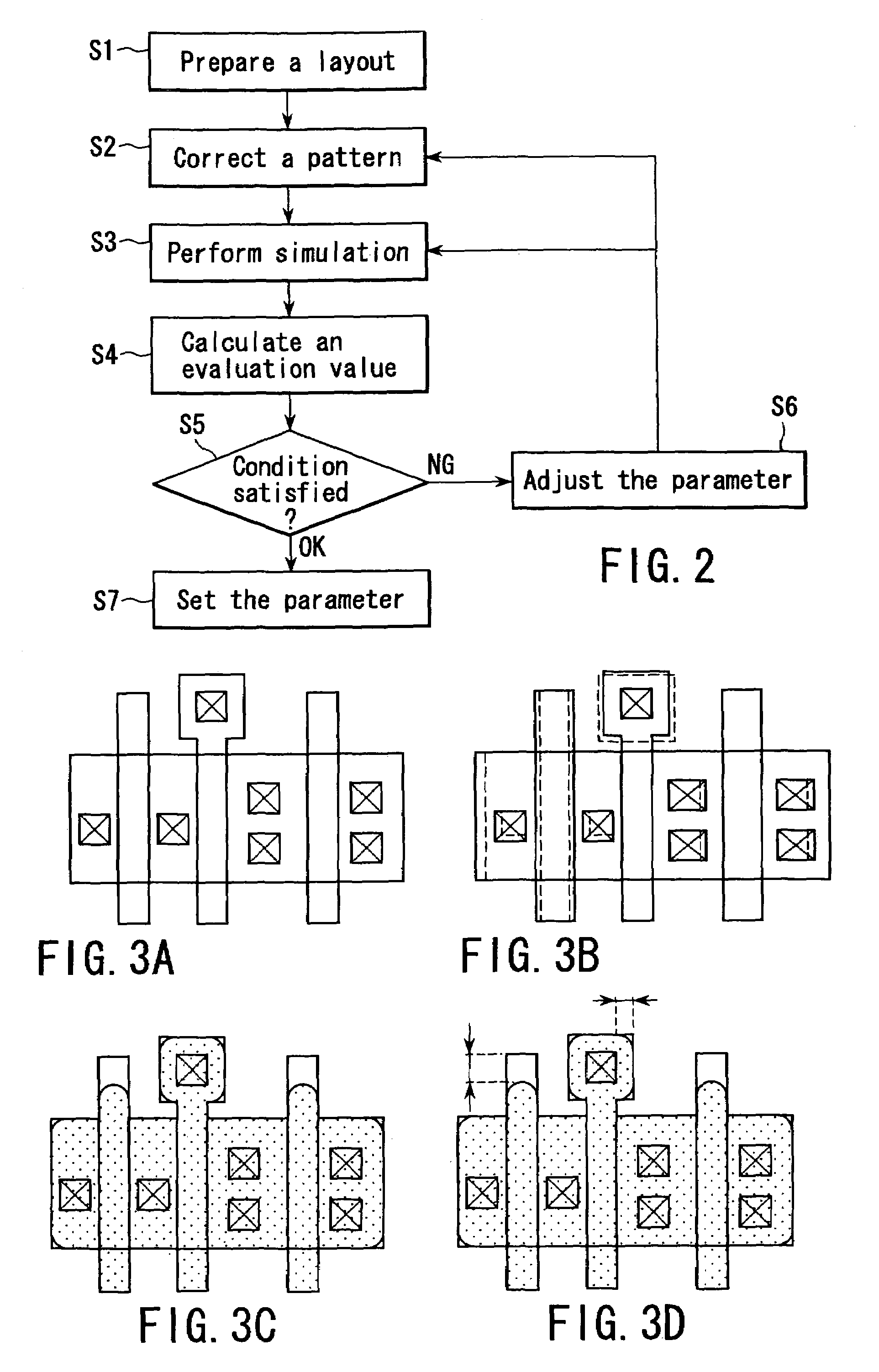Method of setting process parameter and method of setting process parameter and/or design rule
a technology of process parameter and design rule, which is applied in the direction of diffusion transfer process, semiconductor/solid-state device testing/measurement, instruments, etc., can solve the problems of not meeting the specifications of the pattern, the pattern formed cannot be said to provide the desired device pattern, and the pattern is difficult to form
- Summary
- Abstract
- Description
- Claims
- Application Information
AI Technical Summary
Benefits of technology
Problems solved by technology
Method used
Image
Examples
first embodiment
[0031]FIG. 1 is a function-block diagram of a process-parameter setting system according to the first embodiment of the present invention.
[0032]Process-pattern optimizing patterns 11, design rules 12 and parameter groups 13 are prepared for the process-parameter setting system. The parameter group 13 includes a plurality of process parameters.
[0033]The process-pattern optimizing patterns 11 include design layout patterns for use in various masks or reticles and are similar to patterns of actual devices. The design rules 12 are ones for use in manufacturing, for example, the next-generation devices.
[0034]Among the process parameters of the group 13 are parameters that influence the finished shapes of the patterns to be formed on a semiconductor substrate (semiconductor wafer). More precisely, some of the process parameters relate to the mask-forming process, some of the process parameters relate to the lithography process, and some of the process parameters relate to the etching proc...
second embodiment
[0069]The basic concept of the second embodiment of the present invention will be explained first.
[0070]FIG. 7A is a schematic representation of the relation between the severity of design rules (D.R.), on the one hand, and the chip size and the number of dangerous patterns, on the other hand. The severity of D.R. is plotted on the abscissa, decreasing toward the right and increasing toward the left. The chip size and the number of dangerous patters are plotted on the upper half and lower half of the ordinate, respectively. As seen from Area AR1, if the D.R. severity is low, the number of dangerous patterns can be small, though the chip size is large. As seen from Area AR2, if the D.R. severity is high, the chip size can be small, though the number of dangerous patterns is large.
[0071]The chip size and the number of dangerous patterns are preset in accordance with the specifications of the device. Assume that the chip size is preset to A or less and the number of dangerous patterns ...
PUM
 Login to View More
Login to View More Abstract
Description
Claims
Application Information
 Login to View More
Login to View More - R&D
- Intellectual Property
- Life Sciences
- Materials
- Tech Scout
- Unparalleled Data Quality
- Higher Quality Content
- 60% Fewer Hallucinations
Browse by: Latest US Patents, China's latest patents, Technical Efficacy Thesaurus, Application Domain, Technology Topic, Popular Technical Reports.
© 2025 PatSnap. All rights reserved.Legal|Privacy policy|Modern Slavery Act Transparency Statement|Sitemap|About US| Contact US: help@patsnap.com



